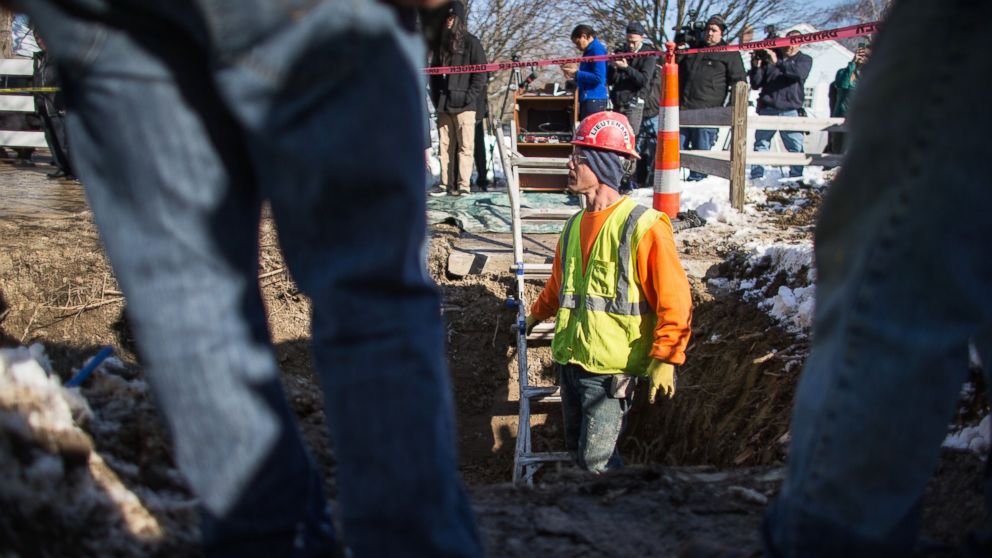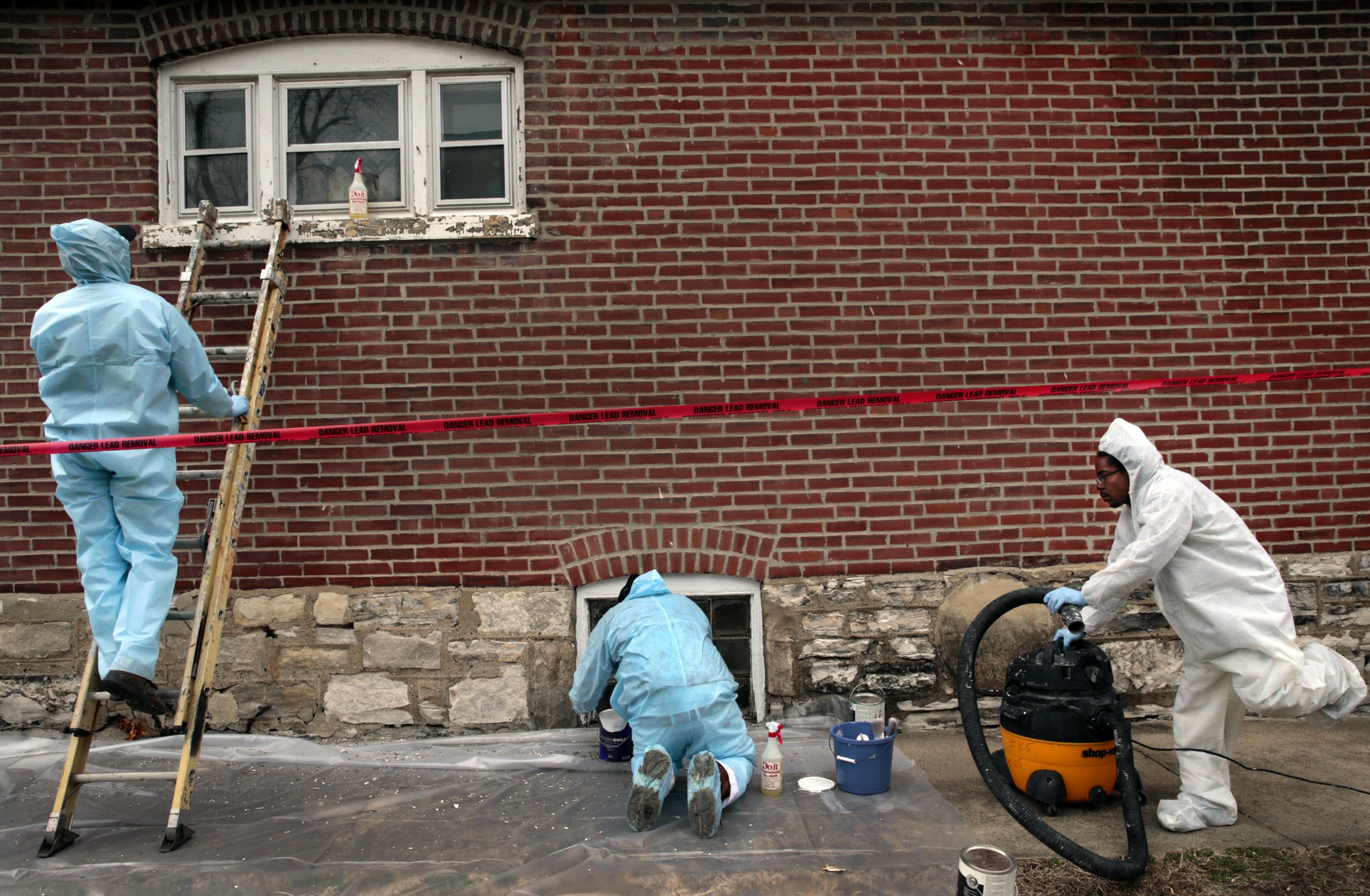Sticker Shock of Fixing Flint's Lead Problem Hints at Colossal Price Tag for US-Wide Remedy
The problem in Flint, Michigan, reveals the pricey problem that the U.S. faces.

— -- For Americans who may think that the lead contaminated water crisis in Flint, Michigan, is a distant, if unfortunate, problem, President Obama had some sobering words of caution this week, noting that Flint is just one example of the nation's infrastructure in dire straits.
"The broader issue, though, is we've got bridges, we've got roads, we have ports, we have airports, we have water mains and pipes -- as we saw in Flint -- that suffer from neglect," Obama said Friday during a press briefing during which he pointed to failures in Flint as well as those in the subway system of the nation's capital.
"And in many parts of the country, we're still relying on systems that were built 30, 50, in some cases 100 years ago," the president said.
Replacing lead-contaminated pipes in Flint, Michigan, and lead paint abatement the U.S. as a whole is a pricey proposition, but something the country has no choice but to pay for, environmental and health experts say.
President Obama said the solution about how to fix the nation's infrastructure is apparent, but blamed the Republican Congress and the aversion to government spending.
"It's not because people haven't been aware of the need. We've known for years now that we're a trillion or two trillion dollars short in terms of necessary infrastructure repair," he said.
Gerald Markowitz, a public health historian who has studied the lead exposure issue for over 30 years, called the solution a "very do-able process."
"My concern is when you start throwing out numbers that are billions of dollars, or whatever, people throw up their hands and say it’s impossible, 'How can we spend that kind of money?'" said Markowitz, who is a distinguished professor at John Jay College of Criminal Justice and the Graduate Center of the City University of New York.
Investments ratings firm Fitch Ratings said estimates that to replace all lead service lines in the country range from a few billion to $50 billion. The firm explains that there may be as many as 10 million lines to replace at the cost of $5,000 apiece.
Another estimate said it could cost $30 billion, according to the American Water Works Association, based on the average cost of $5,000 per line. The nonprofit 501(c)(3) professional association based in Denver, Colorado, estimates there are 6.1 million lead service lines nationwide.
Earlier this week, President Obama visited Flint, Michigan, drinking tap water there to show residents it was safe if a filter is used.
The billions estimated to replace lead service lines across the U.S. don't include the cost of what some health experts warn may be the even more pressing issue of lead paint in some homes. The U.S. Centers for Disease Control and Prevention says there is no safe blood lead level in children, and even low levels of lead in blood have been shown to affect cognitive function and academic achievement. Although there was a ban on the use of lead in new paint in 1978, there can still be exposure to lead in older homes.
Still, David Jacobs, chief scientist for National Center for Healthy Housing and former director of the Department of Housing and Urban Development's Office of Healthy Homes and Lead Hazard Control, said the national problem of lead poisoning is not insurmountable.
"We know how to solve this problem," Jacobs said. "We have both short-term and long-term methods, and we need to do both."
In the U.K., where approximately 40 percent of homes had lead pipes, according to a 2010 article in Environmental Health Perspectives, the response to their lead pipe problem has been on corrective water treatment instead of partial service line replacement.
The World Health Organization points to Uruguay as a country that acted "decisively" in 2001 after 4,400 cases of lead poisoning were identified in the working-class district of Montevideo called La Teja. Uruguay issued regulation that limited lead in paint and other laws that addressed the issue.
The U.S. Environmental Protection Agency told Congress last year that national water infrastructure maintenance, not just replacing lead pipes, will cost at least $384 billion.
This week, the Michigan Senate approved another $128 million for Flint through emergency aid legislation that will go to state's House for approval. Lawmakers already approved $9.4 million in October, $28 million in January, and $30 million in February for the city. The various rounds of money have been allocated not just to replace lead pipes that provide water to residents but also to provide other services like health insurance, nutrition programs, additional staff and an investigation into the crisis.
Flint's Mayor Karen Weaver said in February that the city needs $55 million to remove its lead pipes, based on a similar effort by the city of Lansing, Michigan, to remove its lead pipes. Michigan Gov. Rick Snyder had estimated replacing the lead pipes would cost $60 million over 15 years, he said in emails he released in January.

Gov. Snyder has proposed another $25 million in the state budget to address an additional 8,000 pipes in Flint.
A spokesman for Snyder told ABC News that scientific and engineering reviews recently suggested that in addition to lead lines, the state may need to address galvanized pipes as well.
"If that is the case, we will need to look at the $25 million request and see what additional resources may be necessary," Snyder's director of communications, Ari Adler, told ABC News.
In Flint, it could cost around $3,000 to replace a 40-foot lead pipe that doesn't include related expenses like repaving streets and sidewalks, Harold Harrington, business manager of Flint’s plumber’s union the United Association Local 370, told Wired. With one estimate of 20,000 pipes that need replacing in Flint, according to Wired, that would reach $60 million.
"What Flint has shown us is this is a problem that we can’t ignore," Mae Wu, senior attorney National Resources Defense Council's health program, told ABC News. "As time marches on, it’s only going to get worse. If nothing else, we have to figure out a way to solve this problem, no matter what the price tag is."




